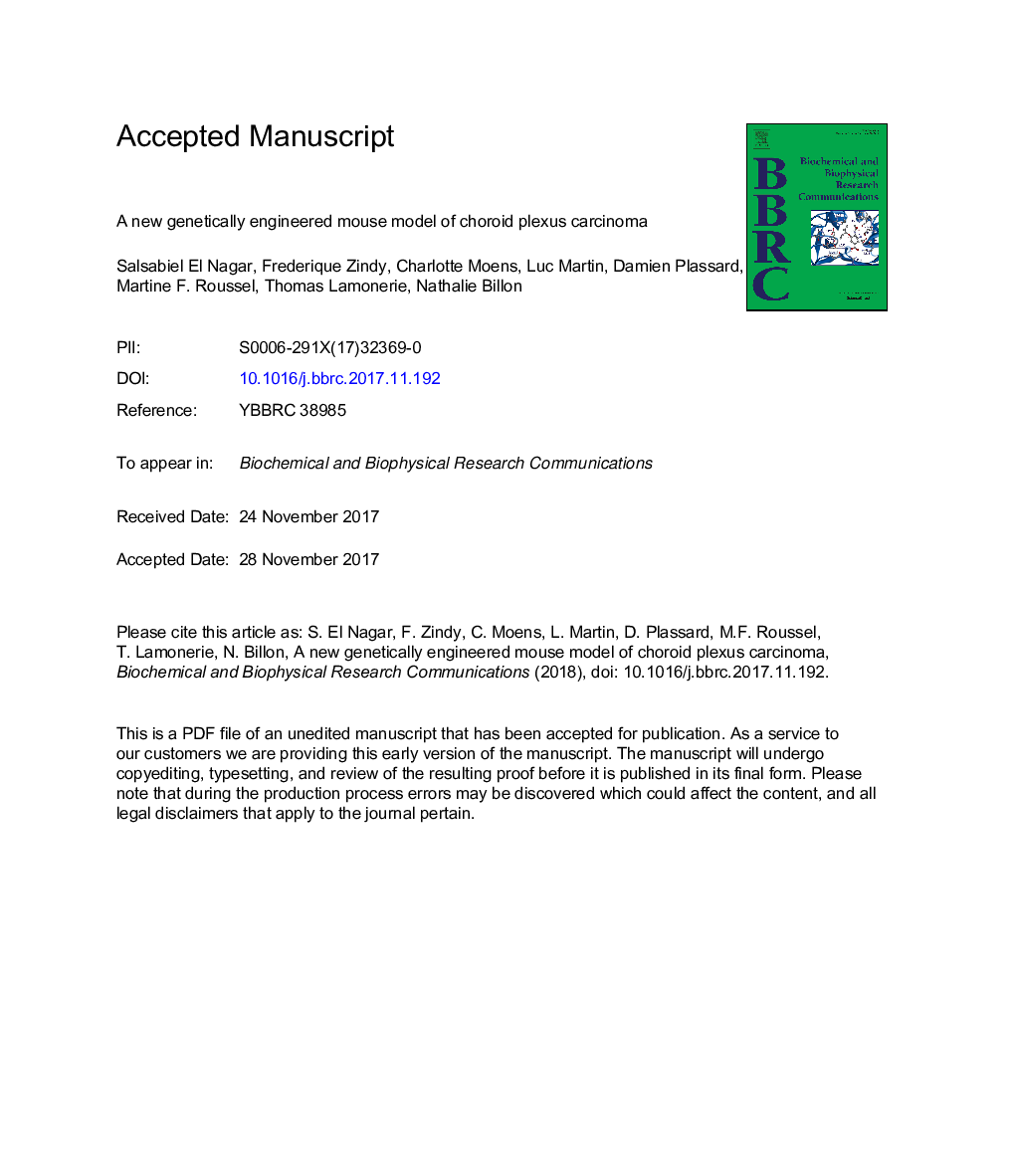| Article ID | Journal | Published Year | Pages | File Type |
|---|---|---|---|---|
| 8294865 | Biochemical and Biophysical Research Communications | 2018 | 17 Pages |
Abstract
Choroid plexus carcinomas (CPCs) are highly malignant brain tumours predominantly found in children and associated to poor prognosis. Improved therapy for these cancers would benefit from the generation of animal models. Here we have created a novel mouse CPC model by expressing a stabilised form of c-Myc (MycT58A) and inactivating Trp53 in the choroid plexus of newborn mice. This induced aberrant proliferation of choroid plexus epithelial cells, leading to aggressive tumour development and death within 150 days. Choroid plexus tumours occurred with a complete penetrance in all brain ventricles, with prevalence in the lateral and fourth ventricles. Histological and cellular analysis indicated that these tumours were CPCs resembling their human counterparts. Comparison of gene expression profiles of CPCs and non-neoplastic tissues revealed profound alterations in cell cycle regulation and DNA damage responses, suggesting that dysregulation of cell division and DNA checkpoint pathways may represent key vulnerabilities. This novel animal model of CPC provides an invaluable tool to elucidate the mechanism of CPC formation and to develop successful therapies against this devastating paediatric cancer.
Related Topics
Life Sciences
Biochemistry, Genetics and Molecular Biology
Biochemistry
Authors
Salsabiel El Nagar, Frederique Zindy, Charlotte Moens, Luc Martin, Damien Plassard, Martine F. Roussel, Thomas Lamonerie, Nathalie Billon,
